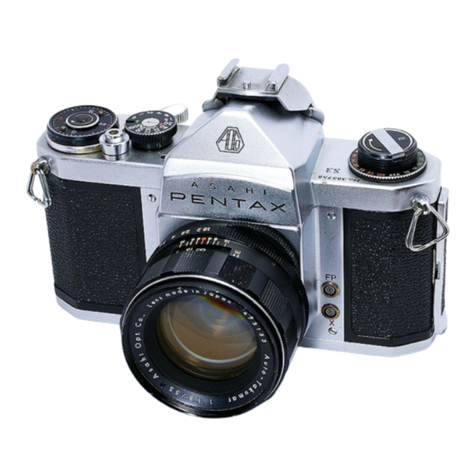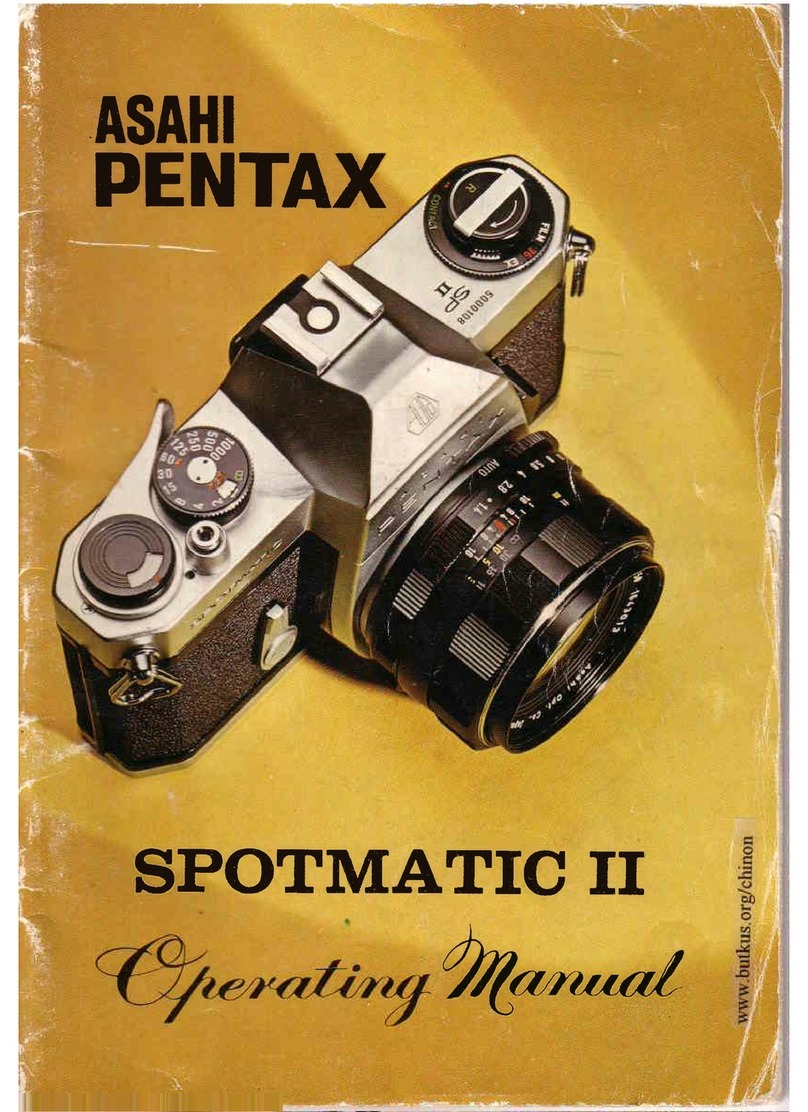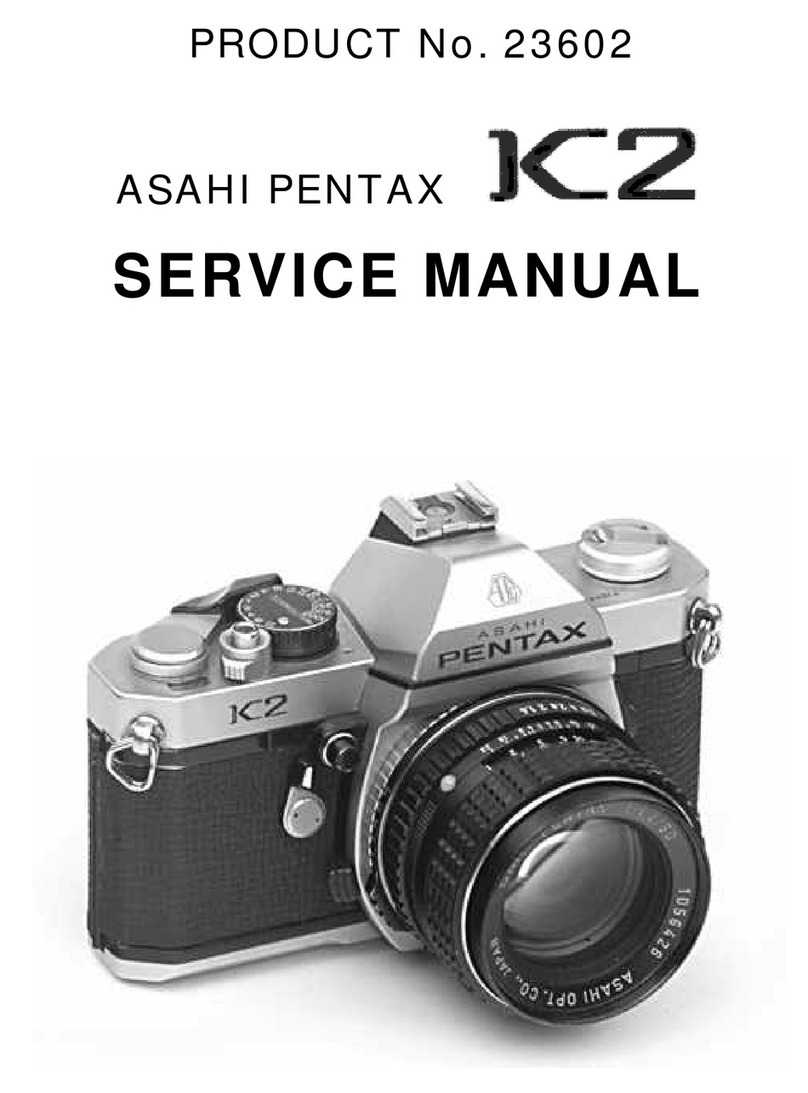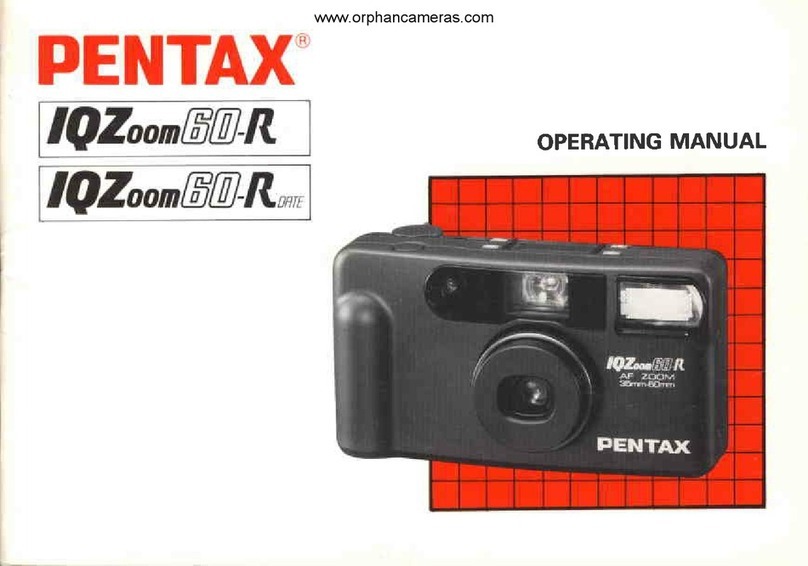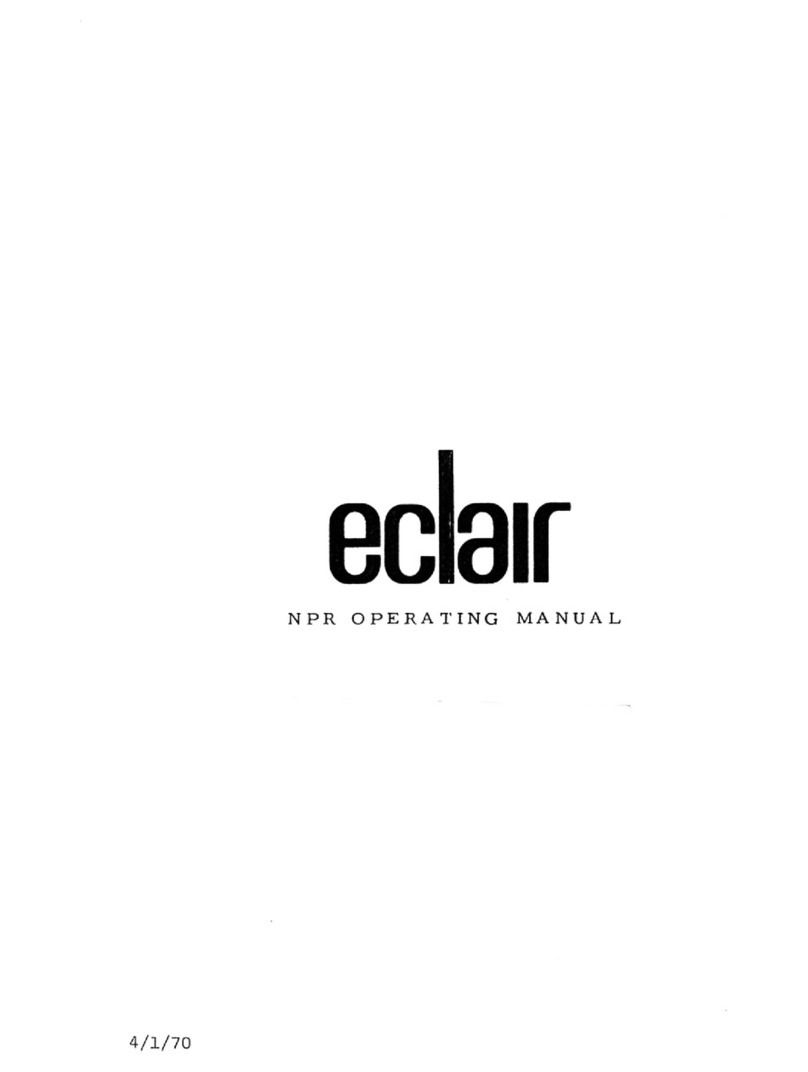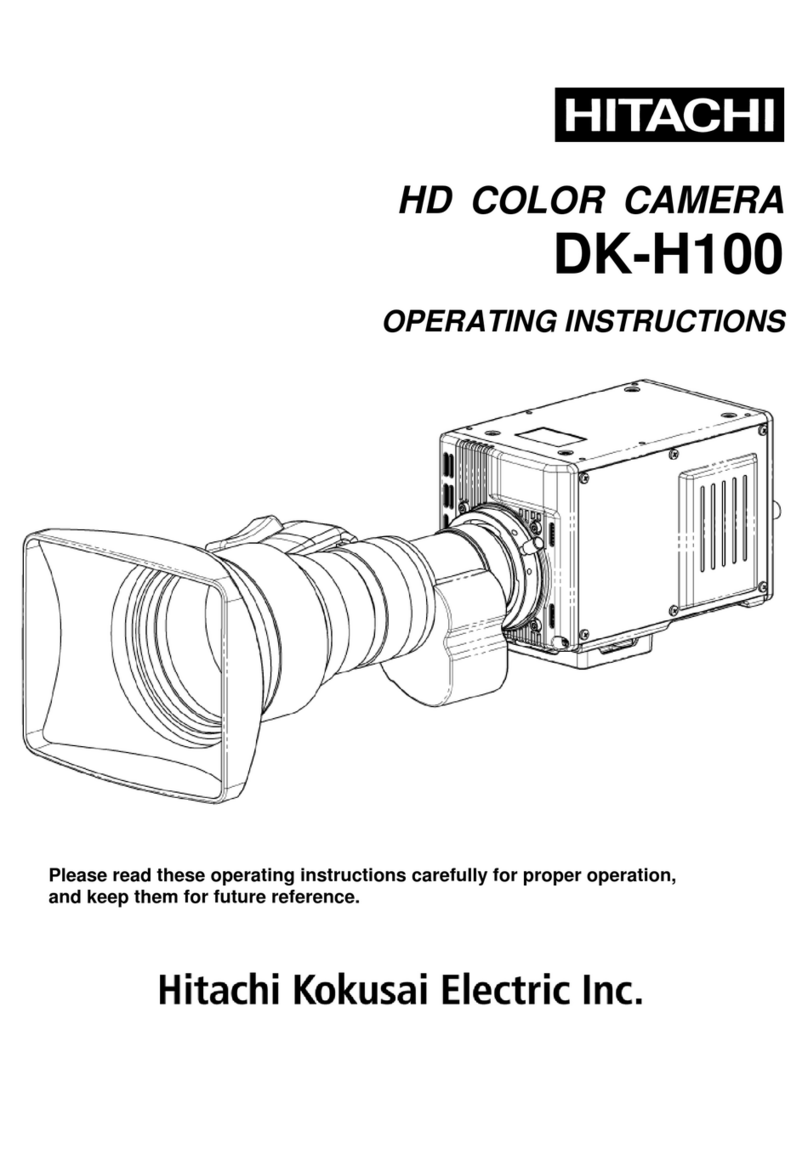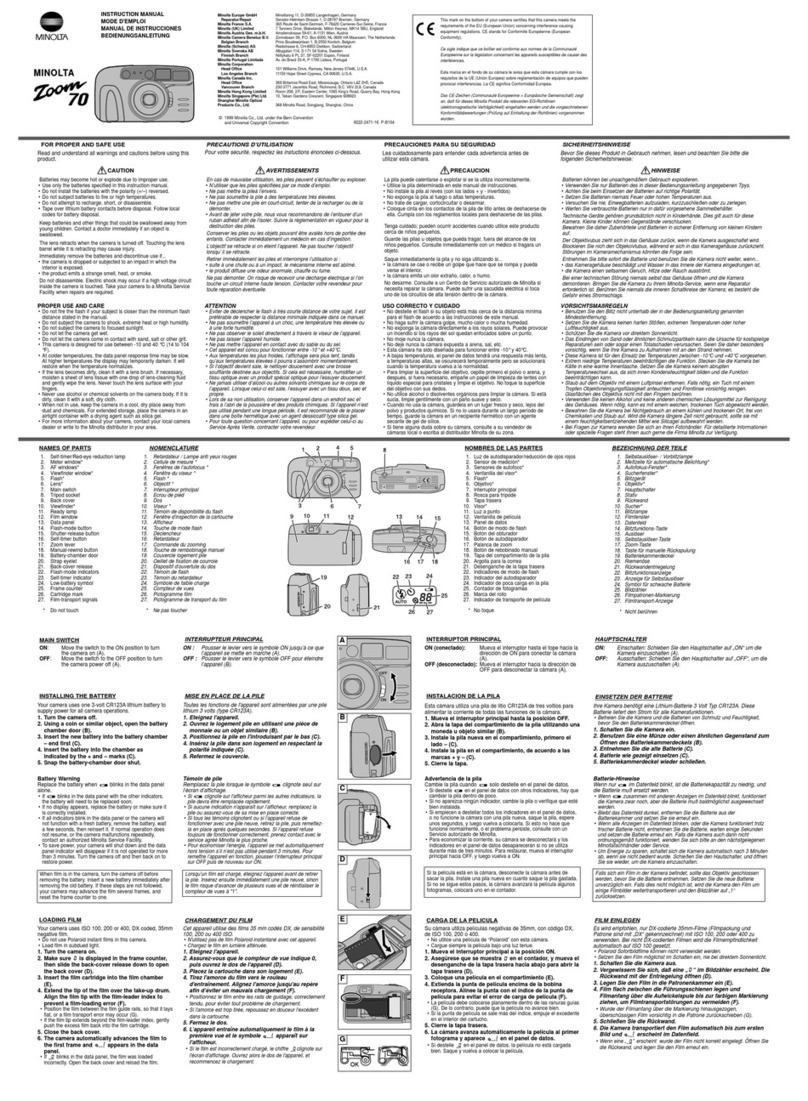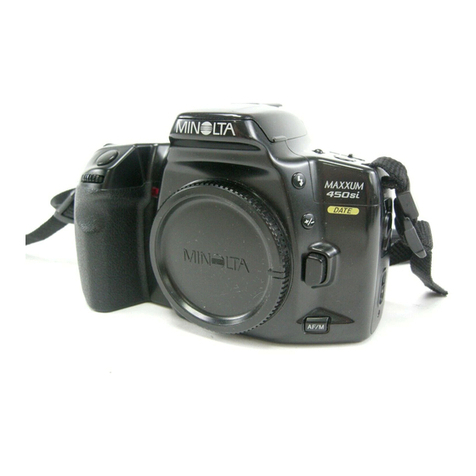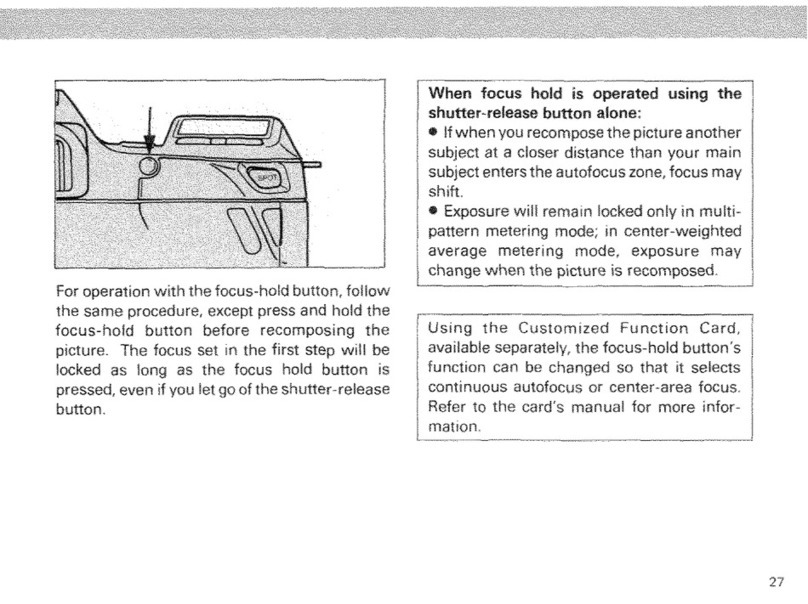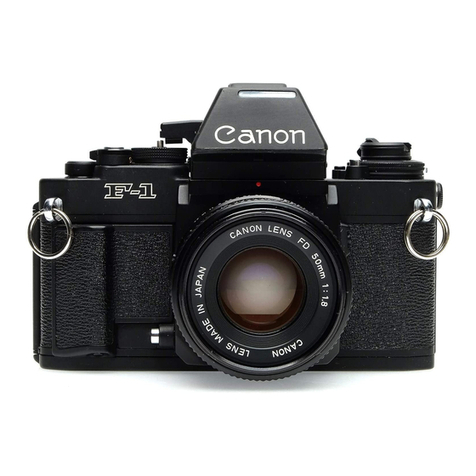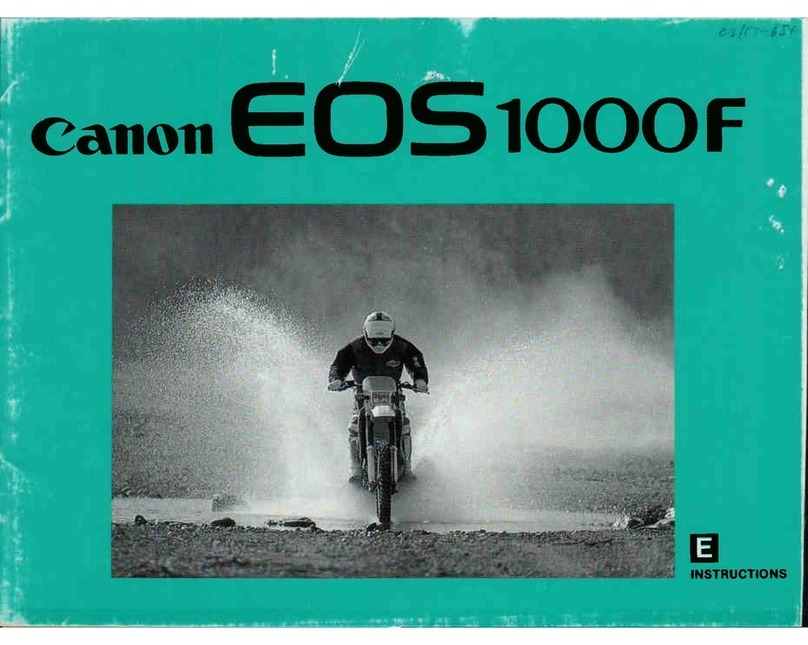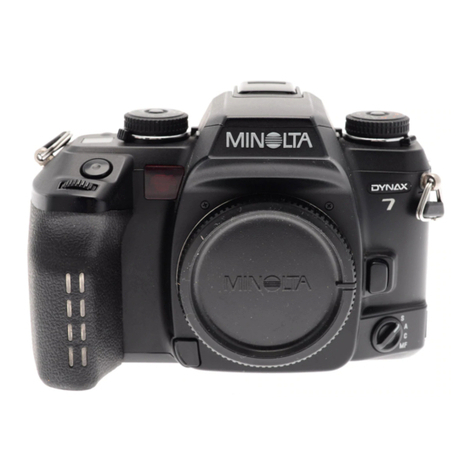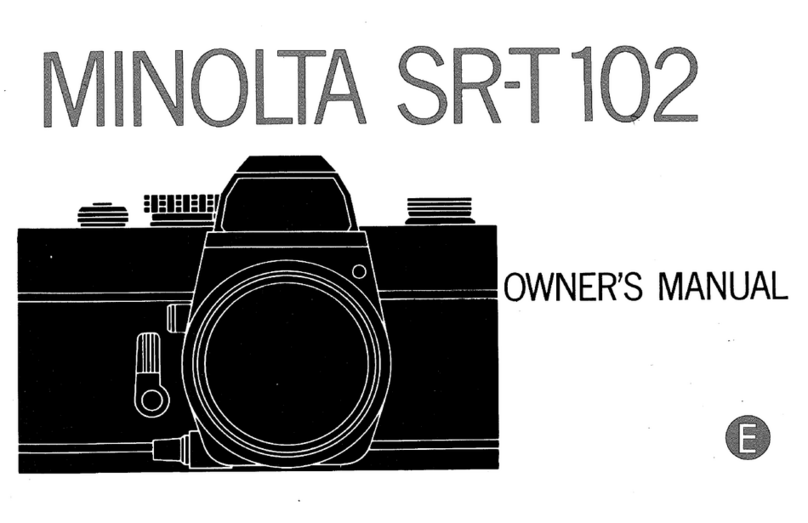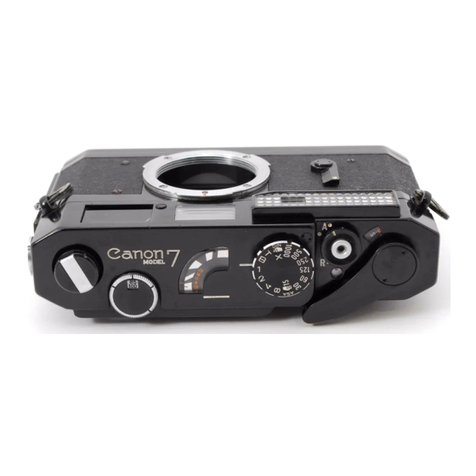ASAHI Pentax KX User manual

;t.,
..
..
06661
AS
AH
I
OPTICAL
CO
., L
TO
. C.P.O.
895,
To
kyo
1
00
·
91,
JAPAN
ASAHI
OPTICA
L
EUROPE
N
.V.
Weiveldlaan 3·5,
1930
Zaventem,
BELGIUM
ASAHI
OPTICA
L
EU
ROPE S.A. (Ha
mbur
g
Offi
ce)
2000
Hamburg
54 (L
okstedt),
Grandw
eg
64, WEST GE
RMANY
ASAHI
OPTICAL
(A
M
ERICA)
INC.
15
East
26
th Street,
Suite
171
0,
New
York,
New
York
10010
, U.S
.A
.
ASAHI
OPTICAL
BRASILEI
RA
INO
. E CO
M.
L
TO
A.
R
ua
Estados
Un
idos,
1053,
Sao Paulo -
SP,
BRAS
IL
C3
Printed in Japan
ASAHI
PENTAX

INDEX-------------------------------
Nomenclature
Specifications
•
Lens
Mounting
................................
..
..........
..
..........
..
.................
1
4
6
Battery
.....................................
..
..............
..
.......................
..
....... 7
Basic
Operating
Instructions
...
..
..........................................
....
8
Film
Loading
a.nd
Winding
..........................................
..
....... 10
Setting
ASA
Film
Speed .........................................................
11
Compose and Focus
..
.............
..
..............................
..
.............. 12
Shutter
........
......
........................
..
...........
..
...........
..
.........
...
..
.
..
....
13
•
Camera
Holding
.........
..
..................................
..
............
..
........
14
Film
Unloading
.....................................................................
15
Flash
Synchronization
......
........
........................................
..
.......
16
Depth-of
-
field
Preview
Button
and
Guide
...........................
18
Depth-of-field
Table
: SMC Pentax
50mm
Lens ...................
..
19
Helpful
Hints
on
Exposure
Problems ..................
..
............. 20
Dual Preference
Exposure
System
..
..........
..
.....
..
..................
21
Activating
Exposure
Meter
................................................... 22
Shutter
Button
Lock
.................................
..
............................ 22
Range
of
Light
Measurement
..
............
..
...............
..
.................. 23
Manual
Shutter
Operation
................
..
.....
..
..
........................ 24
Self·timer
.............................
...
...........
..
...........
...
...................... 24
Mirror
Lock-up
...................................................
..
..............
..
....
..
Infra.red
Photography
...................................
..
.
..
...
......
..
............
25
26
Multiple
Exposure
.....
..
...................
..
..................
...
..................
..
27
Using
Conventional
Screw-mount
Takumar
Lenses ...............
28
Open-
aperture
or
Stop-down
Metering
..............
..
.................
30
Re
sistance
to
Temperature
Extremes
and
Changes ....
..
.........
31
Camera Maintenance ...............................................................
32
•
Warranty
Pol
icy
Memo
..............
...
..
...................
..
.............................
34
36
SMC Pentax lenses and P
entax
accessories are engineered and
produced
meticulously
to
preci
Asahi Pentax
specification
s.
Lenses and accessories
fr
om
other
manufactu
rers are not
produced
to
these precise
specifications
and,
ther
e
for
e,
may
cause
difficulties
with
-
or
actual damage
to
-a Pentax
camera. Asahi Pentax
cannot
assume any
responsibility
or
liability
for
difficulties
resulting
from
the
use
of
any
other
br
and
of
lenses
or
accessories
with
an
Asahi Pentax camera.
NOMENCLATURE
o
Rapid-wind
lever
f)
Shutter
speed
dial
e
Shutter
speed
index
o X
contact
hot
shoe
o Accessory shoe
@
Battery
check
button
f)
Film
speed
indicator
€)
Film
rewind
knob
Cl)
Film
rewind
crank
CID
Film
speed
indicator
pin
.1
~
Mirror
lock-up
lever
«i)
Depth-of-field
preview
button
~
Lens release lever
~
Lens
mounting
guide
bump
@
Depth-of-field
guide
WDistance scale
€II
Di
aphragm/distance
index
9 Diaphragm
ring

~
Strap ring lug
fZl
Self-timer
lever (Start lever underneath)
e Focusing ring
~
Aperture-reader
window
~
X flash
terminal
fD
FP
flash
terminal
WAccessory
fitting
.groove
~
Film
guide rails
G)
Film
rails
~
Viewfinder
eyepiece
~
Film
chamber
Ol
Battery
chamber
~
Tripod
receptacle
@IV
Shutter
curtains
@iJ
Film
rewind
button
~
Sprocket
~
Film
take-up spool
aD
Film
roller
~
Back cover
~
Film
pressure plate
PENTAX
1'*3
e3

SPEC
IFICATIONS
Type
Film
and Picture Size
Standard lenses
Shutter
Self-timer
Viewfinder
Focusing
Reflex
Mirror
35mm
SLR
with
built-in
through-the
-Iens
light
meter.
35mm
film
.
24mm
x
36mm.
SMC Pentax
50mm
f/1.2,
50mm
f/1.4
and
55mm
f/1 .8
with
fully-automatic
diaphragm.
Filter
size:
52mm.
Minimum
aperture:
f/22
.
Focusing:
0.45m
(1.5
ft.)
to
infinity.
Horizontal
run,
focal-plane shutter
of
rubberized silk curtains. Speeds:
B,
1 -
1/1000
sec.
Shutter
button
lock
provided.
Bui!t-in
self-timer
with
i
nterrupt
function.
Releases
shutter
in
5 -
13
sec.
Pentaprism
finder
with
cross-microprism
or
split-image focusing screen.
Aperture
setting
on lens visible in
viewfinder.
Shutter
speed
setting indicated
by
blue
needle.
0.88x
magnification
with
50mm
lenses
(life-size
with
55mm
lens).
Dioptry
-0.8.
93%
field
of
view.
Turn
focusing ring
until
viewfinder
image
comes
into
focus.
Instant-return
type
with
mirror
lock-up
device
and special shock absorbers
for
minimum
vibration.
.5
Lens
Mount
Film
Advance
Exposure
Counter
Film
Rewind
Flash
Synchronization
Exposure
Meter
Memo
Holder
Dimensions
Weight
Pentax
bayonet
-
mount
.
Ratchet-type rapid
-wind
lever. 200 pre-advance
and 1600 advance angle.
"Cocked"
indicator
alongside
shutter
release
button.
Automatic
re-set.
Rapid-rewind
crank
for
speedy
film
take-up.
X
contact
hot
shoe
for
cordless flash
connection.
FP
+X contacts
for
conventional flash
cord
connection
. X
synchronization
at
.
1/60
sec
.
Silicon-Photo-Diode
meter
measures central
portion
of
ground
glass
at
full
aperture.
Couples
directly
to
shutter,
aperture and
film
speed
settings. Match needles
for
correct
exposure.
EV
1 - 18
for
ASA
100
film
with
50mm
lens.
Film
speed
from
8
to
6400
ASA.
Powered
by
two
1.5V
silver
oxide
batteries.
Square metal sleeve
for
holding
type/speed tab
from
top
of
film
box.
With
50mm
f/1.4
lens:
width
143mm
(5.
6")
x height
91.4mm
(3.6")
x
depth
94mm
(3.7").
896g
(31
.4 ozs.)
with
50mm
f/1.4
lens.
631g (22.1 ozs)
with
no
lens.

MOUNTING
1.
Remove
the
rear lens and
body
caps.
2.
Match
the
red
dot
e
on
the
camera
body
with
the
red
dot
€I
on
the
lens. Insert
the
lens
into
the
body
and
turn
it
clockwise
until
the
lens locks
with
a
click.
3.
In
the
dark,
when
the
red
dots
are
diff
i
cult
to
see,
align
the
white
plastic
bump
@
on
the
lens barrel
with
the
lens
release lever
G>
by
touch.
Then
turn
and
lock
as
above.
4.
To
detach,
hold
the
camera
with
your
left
hand. Depress
the
lens release lever
G>
while
turning
the
lens
counter
clockwise
with
your
right
hand.
If
you
have
to
put
the
l
ens
dow
n
with
o
ut
the
rear lens cap, place
it
only
on
its
front
end, never
on
the
rear.
When changing lenses ou
tdoors
with
fi
lm
in
the
camera, avoid
direct
sunlight
.
Two
silver
oxide
batteries are
packed separately.
Be
su
re
to
insert them i
nto
the
batte
ry
chamber
before
o~erating
the
camera.
CAUTION
Do
not
push
the
check
button
too
often,
as
it
wi
11
exhaust
the
batteries. The
battery
is
like
a
phonograph
record.
It
can be
damaged
by
skin acids. Handle
by
the
edges
with
a
dry
cloth
before
insertion
into
the
camera.
The
battery
is
not
rechargeable.
Do
not
throw
a dead
battery
into
fire
,
as
it
may
explode
.
Also, keep
it
beyond
the
reach
of
small
children
.
e7
BATTERY
INSERTION
Open
the
battery
chamber cover
wi
th
a
coin
. Ins
ert
the
two
batterie
s
into
the
b
att
ery
holder
of
the
cover as shown
above, each
with
(+ ) side facing
up
.
For
replacemen
t,
use
Eveready S76E
or
Mallo
ry MS76H
or
equivalent
.
CHECK
One set
of
batter
i
es
will
las
t about
one
year,
or
permi
t
about
10,000
shutter
releases.
To
check
the
life,
push
the
battery
check
button
next
to
the
pentapr
ism,
while
viewing
through
the
viewfinder.
If
the
black
meter
needle
drops
to
125
or
lower,
the
batter
i
es
have s'
ufficient
capacity.
If
it
does
not
,
replace
the
two
batteries.
~
'
( ® ).
;~
.~
/

BASIC OPERATING INSTRUCTIONS
1. SET
FILM
SPEED
While depressing
the
pin
alongside
the
film
rewind
knob,
turn
the
outer
ring
of
the
film
speed
indicator
until
the
ASA
number
of
the
film
you're
using matches
the
index
mark.
2. COCK
RAPID·WIND
LEVER
Cock
the
rapi
d·w
i
nd
lever all
the
way
unt
il
it
stops.
The
"Cocked"
indicator
will
turn
red, showing
that
the
shutter
is
cocked
.
3. SET
SHUTTER
SPEED
Turn
the
shutter
speed dial
until
the
speed
you
want
to
use
is
opposite
the
index
mark.
The
blue
needle in
the
viewfinder
indicates
the
shutter
speed
you
have selected. Generally,
you
should
use
the
fastest possible
shutter
speed
to
avoid
blurred
pictures
caused
by
camera
movement.
Try
starting
with
1/125
sec
.
outdoors
in
daylight
and
1/30
sec.
indoors.
s.
4.
COMPOSE
AND
FOCUS
While viewing
through
the
finder
,
turn
the
focusing
ring
until
your
subject comes i
nto
sharp
focus
.
5.
TURN
ON
LIGHT
METER
AND
ROTATE
DIAPHRAGM
RING
Make sure
that
the
rapid·wind
lever
is
at
its pre-
advance angle,
not
at
its
completely
closed
position
.
As
you
depress
the
shutter
button
halfway
,
the
light
meter
turns
on,
and
the
black
meter
needle matches
the
blue one. When
the
needles
match,
you
have
the
correct
exposure. (The
f-stop
you
have selected
is
also visible in
the
small
window
above
the
viewfinder
.)
If
the
black
needle does
not
match
the
blue
one
no
matter
how
far
you
turn
the
diaphragm ring, change
the
shutter
speed.
~
RELEASE
SHUTTER
Hold
your
camera
firmly
and
trip
the
shutter.
Then
cock
the
rapid-wind
lever
for
the
next
picture
. (As long
as
the
lever
is
at
its pre-
advance angle,
the
light
meter
stays ON.
If
you
push
it
back
to
the
completely
closed
position,
the
meter
is
turned
OFF.)
.9

FILM LOADING AND WINDING
Avoid direct light when loading
your
film.
1. 2.
Open
the
back
by
pulling
up
the
rew
i
nd
k
nob
until
the
back
opens.
Place
the
film
cassette in
the
cassette
chambe
r,
and
push
down
the
rewind
knob.
Insert
the
film
leader
into
the
slot
of
the
take-up
spool.
3.
Advance
the
film
by
alternately
turning
the
rapid
wind
lever
and
depressing
the
shutter
button
unt
il
both
sprockets engage
the
film
perforations
,
top
and
bottom
. Close
the
back
by
pressing
it
f i
rmly.
4.
Cock
the
rapid-wind
lever, and
confirm
that
the
f
ilm
rewind
knob
turns
counter-clock
wi
se,
indicating
that
the
film
is
properly
loaded
and
is
moving
from
cassette
to
take-up s
pool.
Trip
the
shutter.
Advance
the
film
until
the
exposure
counter
t
urns
to
"1
" ,
indicating
that
the
first
picture
is
ready
to
be
taken
.
10·
SETTING
MA
FILM
SPEED
5000
4000
25
00
2000
12
50
1000
640
500
320
250
1
60
125
80
50
40
25
20
12 10
• • • • • •
••
•
••••••••••
• • • •
64
32
•
•••
16
8
6400
3200
1600
800
400
200
100
.11
The
ASA
film
speed
rating
of
all
35mm
films
is
given in
the
data
sheet packed wi
th
each
roll
of
film
.
The
higher
the
ASA
number
,
the
more
sensitive
the
film
is
to
light
.
While
depressing
the
film
speed i
ndicator
pin
e ,
turn
the
outer
ring
€I
of
the
film
speed
indicator
until
the
ASA
number
of
your
film
matches
the
inde
x
mark
.
Be
sure
to
set
your
speed
on
the
camera because
it
is
connected
to
the
exposure
meter
system.
MEMO HOLDER
As
a
reminder
of
what
type
of
film
is
in
your
camera, tear
off
the
top
of
the
film
box
and
insert
it
into
the
Memo
Holder
on
the
back cover
of
the
camera.

While
viewing
through
the
view-
finder,
turn
the
focusing ring
until
your
subject comes
into
sharp focus. Depending
on
the
type
of
focusing screen
you
have,
there are
two
ways
of
doing
this
:
Cross-microprism
focusing
syst
em A cross-microprism focusing
system consists
of
a Fresnel
lens, made
up
of
many
concentric
rings,
with
a
microprism
center
underneath
the
ground
glass.
With
this
system,
when
your
subject
is
in focus,
the
image in
the
microprism
center
will
be sharp.
If
your
subject
is
not
in focus,
the
microprism
will
break
the
image
up
into
many
small
dots.
A split-image focusing system
consists
of
a Fresnel lens
with
a
horizontally
divided
screen
under
the
ground
glass.
With
this
system, when
your
camera
is
held
horizontally
and
the
image
is
not
in sharp focus, all vertical lines
seen
through
the
viewfinder
will
appear
to
be
divided
into
upper
and
lower
portions.
To
focus,
simply
adjust
the
focusing ring
until
the
upper
and
lower
portions
are in
perfect
al
ignment.
UTTER
Turn
the
shutter
speed dial
clockwise
or
counter-
clockwise
to
the
shutter
speed desired. The
shutl
.!,
speed
may
be set
either
before
or
after
cocking
the
rapid-wind
lever.
As
you
cock
the
shutter
by
turning
the
rapid-wind
lever,
the
"cocked"
indicator
turns
to
red showing
that
the
shutter
is
cocked. The
indicator
blacks
out
as
you
trip
the
shutter
button
.
For
use
of
the
X setting
on
the
shutter
speed
dial,
refer
to
page 16.
With
the
shutter
speed dial set
on
B
(bulb),
the
shutter
will
stay
open
as
long
as
you
depress
the
shutter
button.
As
you
release
your
finger
from
the
shutter
button,
the
shutter
closes. When a
long exposure
is
desired
while
using
the
B setting,
set
the
shutter
button
lock
by
moving
the
lever
to
the
left
(an
"L"
becomes visible)
while
depressing
the
shutter
button.
Alternately
, use
a cable release
with
a
locking
device
for
a
time
exposure.
At
slow
speeds - sl
ower
than
1/
30
-
support
your
camera
rigidly
to
prevent camera
movement.
To
protect
the
shutter
mechanism,
trip
the
shutter
release
before
putting
the
camera away
for
any
extended
period
.

CAMERA HOLDING
As a general rule,
your
camera should be held more
firmly
in
the
left
hand,
which
does
not
release
the
shutter,.
If
you
hold
your
camera
with
the
right
hand -
the
hand
that
releases
the
shutter
-
it
may
cause camera
movement
.
Often,
blurred
pictures are
due
to
camera movement.
Horizontal
position
A
Hold
the
camera
firmly
with
your
left
hand, and
draw
your
arms close
to
your
body.
Vertical
position
B.
Hold
your
camera
tightly
to
your
forehead
with
your
left
hand, and
draw
your
right
arm close
to
your
body.
Vertical position C.
Hold
your
camera
tightly
to
your
forehead
with
your
left
hand, raise
your
right
arm
and
draw
your
left
arm
to
your
body
,
FILM UNLOADING
After
the
final
pi
,
cture
on
the
roll
has
been taken,
the
rapid-wind
lever
will
not
turn,
indicating
that
the
film
must be
rewound.
Lift
up
the
rewind
crank. Depress
the
film
rewind
release
button
and
turn
the
rewind
crank
as
indicated
to
rewind
the
film
into
its
cassette. Rewind
until
the
tension on
the
crank
lessens,
indicating
that
the
leader end
of
the
film
has
been released
from
the
take-up
spool. Pull
out
the
film
rewind
knob
(the back
will
open
automatically),
and remove
the
film
cassette.
AVOID
DIRECT
LIGHT
WHEN
LOADING
THE
FILM.

FLASH
SYNCHRONIZATION
The
KX
has
FP
and X
terminals
on
the
front
of
the
camera
body,
and a separate X
contact
on
the
built-in
hot
shoe.
The
table
on
the
next
page
shows
which
flash
contact,
which
shutter
speed and
which
flash
bulb
may
be
combined
for
maximum
lamp
efficiency.
Unless these
combinations
are
rigidly
followed,
there
will
be a
failure
in flash
synchronization.
Note
the
"X"
setting
is
exactly
at
the
60
mark
on
the
speed dial.
This
indicates
the
highest
shutter
speed
at
which
electronic
flash
units
may
be used.
Use
the
hot
shoe flash
contact
when using a
shoe-mount
electronic
flash
like
the
Pentax
Autorobo
which
has
a flash
contact
on
the
shoe
bracket
. When using
the
hot
shoe, there
is
no need
to
plug
the
flash
cord
into
the
X
terminal
on
the
body
front.
The
hot
shoe
flash
contact
turns
to
"hot"
(switched on)
only
when
you
insert a
shoe-mount
electronic
flash.
It
remains
"cold"
(disconnected) even when
using
an
electronic
flash
with
its cord plugged
into
the
X
terminal
on
the
body
front.
This
eliminates
the
danger
of
electric shocks.
16.
There are basically
two
types
of
flash buIb
attachments
on
the
market
:
clip-on
types and
bracket
types.
Either
can be used
with
your
camera. The
clip-on
types are attached
to
the
hot
shoe and
the
bracket
types are screwed
into
the
tripod
screw hole.
Use
one
of
these three
bulb
types
:
M,
MF
or
FP.The
correct
terminal
and
the
correct
shutter
speed
to
use
for
each
of
these three
types are
outlined
in
the
table
below
.
Before attaching
the
flash
unit
to
the
camera,
you
must
remove
the
protective
plug
from
the
proper
terminal.
When
not
using
the
terminals, keep
the
plugs inserted.
SHUTTER
SPEED 1 1 1 1 1 1 1 1 1 1
1000 500 250 125
60
30
15 8
""""4
2"
ELECTRONIC
FLASH
X
FLASH
BULB
FP
FP
CLASS
X M . MF . FP
CLASS
.17
B

DEPTH-Of-f iELD PREVIEW BUTTON AND GUIDE
Depth
of
field
is
the
range between
the
nearest and farthest
distances
which
are in focus
at
a given lens aperture.
If
you
wnat
to
know
how
great
the
depth
of
field
is
at
a certain
aperture, focus
on
a subject and
see
through
the
vi
ewfinder
while
depressing
the
depth-of
-
field
preview
button
e.Or,
after
focusing,
l
ook
at
the
dept
h-of-field
gu
ide
on
the
lens. In
the
photograph
below,
the
distance scale
is
set
at
5 meters
...
the
lens
is
focused
on
a subject 5 meters away. The calibrations
on
each
side
of
the
distance
index
correspond
to
the
diaphragm setting and
indicate
the
range
of
in-focus distance
for
different
lens apertures.
For
example, if a lens opening
of
f/4
is
to
be used,
the
range
on
the
distance scale ring covered wi
thin
the
figure
4
on
the
depth-of-
field
guide indicates
the
area
in focus
at
that
lens opening.
You
will
note
from
the
depth-of-field
gu
ide in
the
photograph
that
the
range
from
approximately
4.5
to
6.5
m
is
in focus.
Note
that
as
the
lens apertures change,
the
effective
depth
of
field
also
changes.
For
the
depths
of
field
at
diffe
r
ent
apertures and
distances, refer
to
the
next
page.
6 5 4 Distance
(m)
18-
DEPTH-O
f-fiEL
D TAB
LE:
SMC
PENTAX
50mm
LE
NS
Distance
scale
045m
06m
1m 1
5rn
2m
5rn
10m
if)
Fl
.4
0
.45
0 .
59
0
.98
1
.46
1.
93
4 .5 7 8
.40
5 1.75
- 0 .4 5 3 - 0
.61
_ 1
.02
-
1.
54
-
2.
0 7 - 5 .
52
- 1 2 .
36
F2 0
.4
5 0 .
59
0 .
98
1
.45
1.
9 0 4 .4 1 7 .
86
36
.
24
- 0
.454
-0
.6 1 -
1.0
2 -
1.
56
-2
.
11
- 5 .
78
- 13 .
75
F 2 .8 0
.44
0 .
59
0 .
97
1
.43
1
.87
4 .2 1 7 .
24 25
.9 0
- 0
.46
- 0 .6 1
-1
.03 - 1.
58
- 2 .16 -6 .1 6 - 16 .19
F4
0
.4
4
0.59
0.95
1
.4
0 1
.8
1 3 .
94
6.48
18 . 14
-
0.4
6
-0
.62
-1
.0 5 - 1 .6 2 -
2.
23
-
6.8
4 -
22
.
05
_
00
F
S.6
0
.44
0
.58
0 .
94
1.
36
1.
75
3 .
64
5 .
68
12 .
97
- 0
.46
-0
.62
-1
.
07
- 1.
68
-2.34
_ 8 .
03
-
42
.
68
F8 0
.44
0 .
57
0 .9 1 1.
24
1.
66
3
.2
6 4
.8
0
9.
10
- 0
.47
-
0.
63
-1.
11
-1
.
89
-2
.
52
-10.87
Fll
0 .4 3
0.
56
0 .
88
1 .3 0
1.
56 2.88
4 .
02
6.63
- 0
.47
- 0
.65
-
1.
15
-1
.
77
- 2 .8 0
-19.53
0 .
42
0
.54
0
.84
1.1
6
1.4
2
2.42
3 .16 4
.57
F1
6 - 0 .48 -
0.67
_1.2
4
-2
.16 -
3.4
2
•
Distance
scale
"6"
2'
3'
5'
10'
15
'
30'
00
Fl
.4
1
'6
.
12
" 1'
11
.
8"
2'
1
1.5
"
4'1
0 .4 "
9'
5 .
6"
13 ' 9 .
7"
25
' 6 .6 " 1
69
' 9 .
2"
1' 6 . 13 " 2 ' 0 .2 "
3'
0.
6"
5'
1
.7"
10 '
7.2"
16 ' 4 .9 "
36
' 4 .2 "
F2
I ' 5 .
9"
1'
11.
6"
2 ' 11 .
3"
4' 9 .8 "
9'
3.
1"
13
' 4 .3 "
24
' 0
.2
" 1
18'
3.5"
I ' 6 .
1"
2'
0
.4"
3'
0 .8 "
5'
2
.4
"
10
'
10
.6
" 1
7'
1
.2"
39'
11
.8
"
F
2.8
I '
5.8
" 1'
11.
5"
2'10
.
9"
4' 9 "
8'
11.
9"
1
2'
9 .
6"
2 2 '
3"
84'
11.
6"
I ' 6 .
2"
2 ' 0 .
5"
3'
1.1 "
5'
3.
4"
11' 3 .
2"
18 '
1.4"
4
6'
1
.4
"
F4 I ' 5 .6 " 1' 11
.4"
2 ' 1
0.6"
4' 7.
7"
8'
7.4
"
12
' 0 .
6"
20
' 0
.4"
59'
6 .
4"
I '
6.4
"
2'
0
.6"
3'
1.7
" 5' 7 "
11'11.2
"
19
'
11"
59
' 1
1.6"
FS.6 I ' 5 .5 "
1'11.
2"
2'
10
" 4' 6 .2 " 8 '
1.
9"
11
'
2"
1
7'
8 .3 "
42'
6 .
8"
I '
6.5"
2' 1" 3 ' 2 .3 "
5'
7.2 " 12'
11.
2 "
22
'
10
.
7"
100
'
1.3
"
F8 I '
5.4
" 1'
10
.
8"
2 ' 9 .1 "
4'
4.
1"
7'
6.8"
10
' 1" I S ' 0 .7 "
29'1
0
.2"
I'
6.6
" 2 '
1.3
"
3'
3.4"
5'
10.9"
14'
9.5"
29
' 7.
2"
Fll
I '
5.
2 " 1'
10.4
"
2'
8 .
2"
4'
1.
6"
6'
11.
3 " 8 '
11.8"
1
2'
8.4
" 2 1' 9 "
I'
7"
2'
1.
9"
3'
4.8"
6'
4.2"
1
8'
0.
6"
46'
9.7"
F1
6
I'
4.8"
I ' 9
.7"
2'
6.7"
3'
10
"
6'
1
.2
"
7'
7.2"
10
' 1"
IS
'
I ' 7 .3 "
2'
2.9"
3 ' 7 .
6"
7'
3"
28'
7.
6"
.19

HE
The
light
meter
built
into
your
KX
correctly
reads
the
average
of
the
light
reflected
from
the
entire
scene
as
seen
through
the
viewf
inder -
with
a
little
extra
importance,
or
weight,
given
to
what
is
in
the
center. Sometimes, however, there
is
a
great
difference
between
the
light
reflected
from
the
background
and
the
light
reflected
from
the
subject.
In
such a
case,
to
achieve a really
good
photo
,
you
must
compensate
for
the
difference
by
opening
or
closing
down
the
aperture
1
or
2 steps.
As a general rule, when
the
subject
is
darker
than
the
background,
you
compensate
by
opening
your
aperture 1
or
2 steps
further.
For
example:
on
a
bright
day,
when
your
subject
has
his
back
to
the
sun and
you
are
shooting
directly
toward
the
sun
..
.
or
when
you
are
shooting
a subject
against
snow
or
light-colored
sand
...
or
when
you
are
copying
a page
of
black
letters
on
white
paper, increase
the
size
of
the
aperture
somewhat.
When
your
subject
is
brighter
than
the
background
-
if
he
is
standing in a
spotlight,
for
example
-
you
make
the
aperture
1
or
2 steps smaller
to
compensate.
20-
1
J
The exposure system
built
into
the
KX
is
called a
"nee
dle-matching
system"
because
the
correct
exposure
for
any
given
situation
is
determined
by
matching
the
two
needles -
blue
and
black
-
seen
in
the
viewfinder
. This system
is
most
convenient
becau
se
it
allows
you
to
give preference
to
either
aperture
or
shutter
speed.
When
the
aperture
size
is
the
most
important
factor,
set
the
aperture
desired
by
turning
the
diaphragm ring. Then
adjust
the
shutter
speed
dial
until
the
blue
needle in
the
viewfinder
matches
up
with
the
black
needle.
When
shutter
speed
is
the
more
important
factor,
turn
the
dial
till
the
blue
needle reaches
the
speed
you
desire. Then
adjust
the
diaphragm
ring
to
align
the
black needle
with
the
blue
one
.

ACTIVAT
iNG
EXPOSURE
METER
The exposure
meter
of
the
KX
is
switched
on
by
moving
the
rapid-wind
lever
from
its closed
position
to
a
slightly
open
position,
which
is
called
the
pre-advance angle.
With
the
rapid-wind
lever
at
the
pre-advance angle,
as
soon
as
the
shutter
release
button
is
depressed
si
ightly,
the
black
needle in
the
vi
ewfinder
will
move according
to
the
amount
of
light
coming
in
through
the
lens.
The exposure
meter
will
remain
switched
on
until
the
rapid-wind
lever
has
been
returned
to
its
fully-closed
position
.
SHUTTER
BUTTO
N
LOCK
The
shutter
button
lock
lever
is
for
your
convenience
while
you
are
making
a
particularly
long exposure using
the
B
shutter
speed setting.
After
depressing
the
shutter
button,
turn
the
lock
lever
(which
is
on
the
collar
at
the
base
of
the
shutter
button)
so
that
the
letter
"L"
is
visible. When
the
exposure time
is
up,
move
the
lock
lever back
to
its original posi
tion.
This
automat
i
cally
releases
the
shutter
button
.
Use
of
the
shutter
button
lock
lever also
saves
your
battery
as
the
exposure
meter
is
switched
off
as
soon
as
this
lever
is
locked-in.
22e
E
OF
LIGHT
MEASUREMENT
The exposure
meter
of
the
KX
measures
the
b
right
ness
of
the
ground glass.
Therefore
,
the
met
er needles should be
matched
after
you
ha
ve focused
your
subject
on
the
ground
glass
.
The area
(A)
in
the
table
ind
i
ca
t
es
the
readi
ng
range
of
the
meter
, and shouId
not
be
in
te
rp
reted
as
the
camera's
total
range
of
f/s
to
p-shutter
speed
combinations.
As
you
will
not
e
from
the
table
,
with
an
ASA
100
f
ilm,
you
may
use
any
shutter
speed
from
1
s
ec
.
to
1/1000
sec
. in
combinat
i
on
with
any
apert
ure
that
will
match
the
two
needles
in the vi
ewfinder.
The t
otal
range
of
aperture
settings is,
of
course,
determined
by
the
minimum
and
m
aximum
apertures
of
the
lens being used.
F
or
example, w i
th
the
50mm
fIlA
lens and
A
SA
.
l00
film
,
any
aperture
from
fI
lA
(the
max
imum
aperture
of
th
is lens)
to
f/16
may
be
us
ed
with
any
shutter
speed
from
1
sec
.
to
1
/1
000
sec. However, the
comb
i
nation
of
f/22
(
mi
nimum
aperture) and 1/
1000
sec.
is
beyond
the
measurability
range (B),
as
shown in
the
table. As
the
ASA
film
speed changes, the
measurabili
ty
range varies.
~
~
1.4
2 2.8 4 5.6 8
11
16
22
1
T
1
4
1
8
1
15
1 A
30
1
60
1
125
1
2
50
1
500
1 B
1000

The
two
silver
oxide
batteries in
your
KX
are
used
only
for
powering
the
exposure
meter;
the
shutter
mechanism
is
a
totally
manual
operation.
Therefore,
your
camera can
still
be operated
even
if
the
batteries have
worn
out
.
(A
good sign
of
worn-out
batteries
is
that
the
black
meter
needle does
not
respond
when
you
depress
the
shutter
button
si
ightly
.)
If
the
batteries have
worn
out
and
the
exposure
meter
is
no longer
functioning,
you
must
determine
the
correct
combination
of
shutter
speed and
aperture
size
yourself,
from
your
own
experience. Also, packed in
with
most
types
of
35mm
film
is
a data sheet
with
suggestions
for
determining
the
correct
exposure in a
variety
of
situations.
The
self-timer delays
shutter
release between 5
and
13
seconds, depending
upon
how
far
counter-clockwise
you
have
turned
the
cocking
lever.
When
using the self-timer,
do
not depress
the shutter release button
...
it will immediately
release the shutter without delayed action.
Turn
the
cocking
lever
down
90°
-
180
°. Move
the
small
light·colored
self-ti
mer
start lever
as
indicated .
..
the
self-timer
will
start
.
This
self-timer
also
has
an
i
nterrupt
function
.
Even
after
the
self-timer
has
started
to
run,
you
can stop
it
by
movi
ng
the
start
lever
back
to
normal
position,
as
long
as
the
cocking
lever
has
not
been moved back past
the
90
°
position.
You
can re-
start
the
self-timer
by
pushing
the
cocking
lever
down
again and
moving
the
start
lever again.
Do
not
leave
the
cocking
lever in
"interrupt"
position
for
an extended
period,
as
this
may
weaken
the
spring.
24e
In normal
picture-taking
situations,
when you
trip
the s
hutter,
the
reflex
mirror
swings
up
out
of
the
way
.
It
then
automatically
drops
back
down
into place.
Inevitably,
this
causes a small
amount
of
vibration
-and
the
longer
the
lens
you
use,
the
more
noticeable the
vibration
will
be.
When
locking
up
the
mir
r
or.
do
not
keep
the
camera facing
directly
into
the
sun
for
a long
time.
Direct
sunlight
through
the
lens
might
damage
the
shutter
curtain.
To
avoid
this
vibration,
it
is
possible
to
lock
the
mirror
up
after
you
have
completely
finished
focusing. (Because
you
will
not
be able
to
see
anything
through
the
viewfinder
once
the
mirror
is
up,
you
must
finish
focusing
before
locking
it
up.
And
because
light
wi
II
not
reach
the
l
ight
meter,
it
is
necessary
to
have
proper
exposu
re
set
before
lock-up.
Also,
it
is
essential
to
use
a
tripod
for
this
kind
of
shooting.)
Once
everything
is
in focus,
simply
turn
the
lock-up
lever
~
clockwise
as
far
as
it
will
go
and depress
the
depth-of-field
preview
lever @ . The
mirror
will
now
stay
up
even
after
you
trip
the
shutter
.
To
release
the
mirror,
return
the
mirror
lock-up
lever
to
its
original
position
.
The
reflex
mirror
can be
locked
up
either
before
or
after
you
advance
the
film
.

IN
FRA
-
RED
PHOTOGRAPHY
If
you
intend
to
take
infra-red
photographs,
remember
to
use
the
infra-red
index
marked
with
an orange line
on
the
depth-of-field
guide.
First,
bring
your
subject
into
clear focus. Then
determine
the
lens-to-subject distance
from
the
distance scale
on
the
lens. Then
match
your
lens-to-subject
distance
to
the
infra-red
index
by
turning
the
distance scale
accordingly
.
For
instance,
if
your
subject
is
in focus
at
infinity,
turn
the
distance
ring and
move
the
infinity
(co)
mark
to
the
index.
00
~o!I
------ll
+
MULTI
PLE
EXPOSURE
F
or
deliberate
multiple
exposures, make
the
first
exposure in
the
normal
way
. Then
tighten
the
film
by t
urn
ing
the
rewind
knob
e ,and keep
hold
of
the
rewind
knob.
Depr
ess
the
film
rewind
release
bu
tt
on
€)
and
cock
the
rapid-w
ind lever.
This
cocks
the
s
hutter
without
advancing
the
fi
lm
.
Fi
na
l
ly
release
the
shutter
to
make
the
second
exposure. Then
make
one
blank
exposure,
before
taking
the
next
picture,
to
avoid
overlapping.
Exposure
counte
r registration
may
not
be ex
act
.

USING CONVENTIONAL SCREW-MOUNT TAKUMAR LENSES
Conventional
screw-
mount
Takumar
lenses
(both
Super-Takumar
and SMC
Takumarl
can be easily
mounted
onto
your
camera
by
attaching
them
first
to
a
Mount
Adaptor
K.
Use
of
the
Mount
Adaptor
K does
not
affect
any
aspect
of
normal
lens
function
ex
cept
as
regards
the
following
two
points:
1.
Due
to
the
difference
in
coupling
systems, the
automatic
diaphragm
will
not
function
.
2.
Full-aperture
metering
lenses
will
function
as
stop-down
metering
lenses.
28-
HOW TO USE
MOUNT
ADAPTOR
K
1.
Screw
the
conventional
Takumar
lens
into
the
Mount
Adaptor
K.
2.
Attach
the
Adaptor/lens
unit
to
the
camera
body
by
aligning
the
red
dots
e
and
€)
, and
turning
the
lens
clockwise
until
it
locks
with
a
click.
(This takes
slightly
less
than
a
quarter
of
a
revolution
.)
3.
To
remove
only
the
lens, leaving
the
Mount
Adaptor
K
attached
to
the
camera
body,
simply
unscrew
the
lens
counter-clockwise.
Other
screw-
mount
Takumar
lenses can
then
be
attached
in
the
normal
way.
1.
To
remove
the
Mount
Adaptor
K
from
the
camera
body
, first remove
the
screw-
mount
lens.
Then
press,
with
your
thumbnail
or
a
pointed
object
such
as
a
ballpoint
pen, against the spring
pin
@
2.
Turn
the
Mount
Adaptor
K
counter-clockwise
until
you
feel
it
release,
and
take
it
out
.
3.
Since
the
mechanism
for
locking
in
the
Mount
A
daptor
K
is
totally
different
from
that
which
l
ocks
in an SMC
Pentax
bayonet-mount
lens,
the
l
ock
lever
Gl
on
the
camera
body
plays
no
part
at
all.

OPEN.APERTURE OR STop·
DO
WN
METERING
Open-aperture SMC Pentax lenses have a
diaphragm
coupl
i
ng
lever e
on
the
back
of
the
lens
wh
ich locks
into
the
camera
body
to
permit
open-aperture
metering.
The
super
telephotos
do
not
have a diaphragm
coupler,
so
they
must
be
used
with
the
stop-down
metering system.
Use
of
the
Auto-Extension
Tube
Set K
permits
open-aperture metering.
It
can also be set
to
stop
down
the
diaphragm
automatically.
Use
of
other
K Series accessori
es
-standard Extension
Tube
Set K,
Helico
id
Extension
Tube
K,
Auto-
Bellow
s K and Bellows
Unit
K - requires stop-
down
metering
. Whenever
anyone
of
the
se
is
used
between
the
camera
body
and an SMC Pentax
lens,
the
stop-down
metering
system
mu
st be
used.
OPEN-APERTURE
METERING
LENSES
SMC Pentax Fish-eye
17mm
SMC Pentax ..............................
15mm
SMC Pentax ........................
..
....
20mm
SMC Pentax
SMC Pentax
SMC Pentax
SMC Pentax
SMC Pentax
SMC Pentax
SMC Pentax
SMC Pentax
SMC Pentax
SMC Pentax
SMC Pentax
SMC Pentax
SMC Pentax
SMC Pentax
SMC Pentax
24mm
28mm
35mm
35mm
50mm
50mm
55mm
85mm
120mm
105mm
135mm
135mm
150mm
200mm
300mm
SMC Pentax
Zoom
.........
45
~
125mm
SMC Pentax
Zoom
.........
85
-
210mm
SMC Pentax Macro ........
..
........
50mm
SMC
Pen
tax
Macro ................
..
100mm
STOP-
DOWN
METERING
LENSES
f/4
f/3.5
f
/4
f/
3.5
f/
3.5
f/2
f/3.5
f/
1.2
f/1,4
f/1.8
f/1.8
f/2.8
f/2.8
f/
2.5
f/
3.5
f{4
f/4
f/4
f
/4
f/4.5
f
/4
f/4
SMC Pentax ..............................
400mm
f/
5.6
SMC Pentax ..............................
500mm
f/4.5
SMC Pentax ..............................
1000mm
f/8
SMC Pentax
Zoom
......
136
-
600mm
f/6
.7
30-
ESI
STANCE
TO
TEMPERATURE EXTREMES AND CHANGES
The
tempe
r
atu
re range
at
which
your
camera
w
ill
continue
to
function
properly
stretches
fr
om
50
°C
to
-20
° C. However, resistance
to
c
old
could
be hampered
by
oil
which
has
become
dirty
.
Therefo
r
e,
if
the
camera
is
to
operate at
full
efficiency
in very
cold
condi
tions,
it
must
be overhauled and all
oil
must
be replaced.
Sudden changes
in
temperature
will
often
ca
use
moisture
to
condense inside
or
outside
y
our
camera. This
is
a possible source
of
rust,
w
hich
may
be ex
tremely
damaging
to
the
mechanism.
Furthermo
r
e,
if
the
camera
goes
f
rom
a
warm
temperature
to
a sub-freezing
one, and if ti
ny
drops
of
mo
isture freeze,
f
urther
damage
may
be done
by
their
expansion.
- 31
Thus, sudden
temperature
changes
should
be
avoided
as
much
as
possible. As a guide, a
temperature
change
of
10
°C
should
be
allowed
to
take place
gradually
over a
period
of
at
least
30
minutes.
If
this
is
not
possible, keeping
the
camera in its
case
or
bag
will
help somewhat
in
min
imizing
the
effects
of
a rapid
temperature
change.
Ex
tremely
low
temperature
reduces
the
efficiency
of
the
battery.
Therefore,
the
camera
should
be
pro
tected against
low
temperature.
Put
the
batteries into
the
camera
right
before
shooting
.
For
ex
tremely
low
temper
at
ure,
use
new batteries.

CAM
E
RA
MAINTENANC
E
1.
Always
keep
the
viewfinder
eyepiece, lens and
filters
as
clean
as
possible.
To
remove loose
dust
and
dirt,
first
use
the
blower
and
then
the
brush
of
a lens brush. Do
not
try
to
wipe
off
granular
dirt
or
dust -
it's
an excellent way
of
scratching
the
glass.
Smudges, such
as
fingerprints,
should
be
carefully
wiped away
with
either a lens tissue
or
a clean,
soft
cloth.
Clean, plain
cotton
handkerchiefs
that
have already been washed a
few
times are
particularly
good
for
this.
Breathing
on
the
lens before
wiping
is
effective;
but
be sure
to
wipe
away
all
mo
isture
completely.
Commercial lens cleaners are also effective.
2.
Never
touch
the
mirror
or
the
shutter
curtain
with
your
hands. (The natural acids on
your
skin
are very damaging.)
Minor
dirt
or
spots
on
the
mirror
will
not
affect
the
clarity
of
your
pictures.
3.
Take care
not
to
drop
the
camera
or
knock
it
against
anything
solid. Accidents
or
rough handling
can easily damage
the
internal mechanism, even
though
externally
nothing
seems
to
have been
hurt.
32e
4.
Your
camera
is
not
waterproof
. There are several
places where water can get inside and
do
a great
deal
of
damage. Take care
to
protect
both
body
and lens
from
rain
or
splashing water.
If
your
camera should get
wet,
dry
it
off
immediately
with
a clean,
soft
cloth
.
Once a camera
has
become
completely
soaked,
there
is
often
nothing
that
can be done
to
make
it
right
again. However,
in
such a
case,
take
your
camera
as
soon
as
possible
to
an
authorized
Asahi Pentax Service Center.
5.
Where
to
keep
your
camera
while
you
are
not
using
it
is
an
important
point.
The best storage
place
is
cool,
dry,
clean and well-ventilated.
Because
of
the
possible
build-up
of
humidity
,
it
is
risky
to
store
your
camera in a cabinet
or
closet.
It's
also a good idea
to
keep
your
camera in its bag
or
case
while
you are
not
using
it.
6.
When
mounting
your
camera on a
tripod,
be
sure
the
tripod
screw
is
no
longer
than
5.5mm.
This is
the
depth
of
the
tripod
screw
hole
on
your
camera.
If
you
use
a longer screw,
you
will
probably
p
uncture
the
bottom
of
the
hole,
after
which
the
camera
will
not
function
properly
.
e 33

WARRANTY POLICY
All
Asahi Pentax cameras purchased
through
authorized
bona
fide
photographic
distribution
channels are guaranteed against defects
of
material
or
workmanship
for
a peri
od
of
twelve
months
from
date
of
purchase. Service
will
be
rendered and defective parts
will
be replaced
without
cost
to
you
within
that
period,
provided
the
equipment
has
not
been abused, altered,
or
operated
contrary
to
instruction.
Because
the
tolerances,
quality,
and design
compatibility
of
lenses
other
than
Pentax lenses are
beyond
our
control,
damage caused
by
use
of
such
lenses
will
not
be covered
by
this
warranty
policy.
The
manufacturer
or
its
authorized
representatives shall
not
be liable
for
any
repair
or
alterations
except
those made
with
its
written
consent and shall
not
be liable
for
damages
from
delay
or
loss
of
use
or
from
other
indirect
or
consequential damages
of
any
kind,
whether
caused
by
defective material
or
workmanship
or
otherwise;
and
it
is
expressly agreed
that
the
liability
of
the
manufacturer
or
its representatives
under
all
guarantees
or
warranties,
whether
expressed
or
implied,
is
strictly
limited
to
the
replacement
of
parts
as
hereinbefore
provided.
PROCEDURE
DURING
12-MONTH
WARRANTY
PERIOD
Any
Asahi Pentax
which
proves
defective
during
the
12-month
warranty
period
should
be
returned
to
the
dealer
from
whom
you
purchased
the
equipment
or
to
the
manufacturer.
If
there
is
no
representative
of
the
manufacturer
in
your
country,
send
the
equipment
to
the
manu-
facturer,
with
postage prepaid. In this
case,
it
will
take
a considerable length
of
time
before
the
equipment
can be
returned
to
you
owing
to
the
complicated
customs procedures
required in Japan
in
importing
and re-export-
ing
photographic
equipment.
If
the
equipment
is
covered
by
warranty,
repairs
will
be made
and parts replaced free
of
charge, and
the
equipment
will
be
returned
to
you
upon
completion
of
servicing.
If
the
equipment
is
not
covered
by
warranty,
regular charges
of
the
manufacturer
or
of
its representatives
will
apply.
Shipping
charges are
to
be
borne
by
the
owner.
If
your
Asahi Pentax was
purchased
outside
of
the
country
where
you
wish
to
have serviced
during
the
warranty
period,
regular
handling
and servicing fees
may
be charged
by
the
manufacturer's
representatives
in
that
country.
Notwithstanding
this,
your
Asahi Pentax returned
to
the
manufacturer
will
be serviced free
of
charge according
to
this
procedure and
warranty
policy.
In
any
case, however, shipping charges and customs
clearance fees are
to
be
borned
by
the
sender.
To
prove
the
date
of
your
purchase
when
required, please keep
the
receipts
or
bills
covering
the
purchase
of
your
equipment
for
34-
at
least a year. Before sending
your
equipment
for
servicing, please make sure
that
you
are
sending
it
to
the
manufacturer
's
authorized
representatives
or
their
accredited repair shops,
unless
you
are sending
it
directly
to
the
manufacturer.
Always
obtain
a
quotation
of
the
service charge, and
only
after
you
accept
the
quoted
service charge,
instruct
the
service
st
ation
to
proceed
with
the
servicing.
-35
This war
ranty
policy
does
not
apply
to
Asahi
Pentax cameras purchased in
the
U.S.A.
For
these cameras, please refer
to
the
separate
Warranty
Pol
icy
Card enclosed here.

MEMO
9/
1975
Other ASAHI Film Camera manuals
